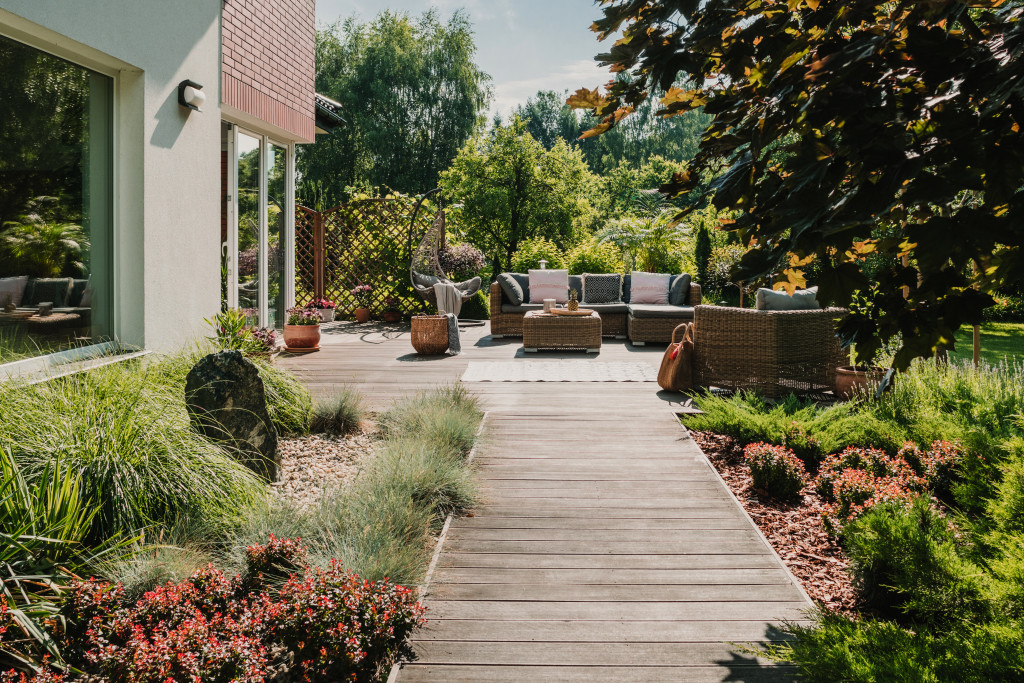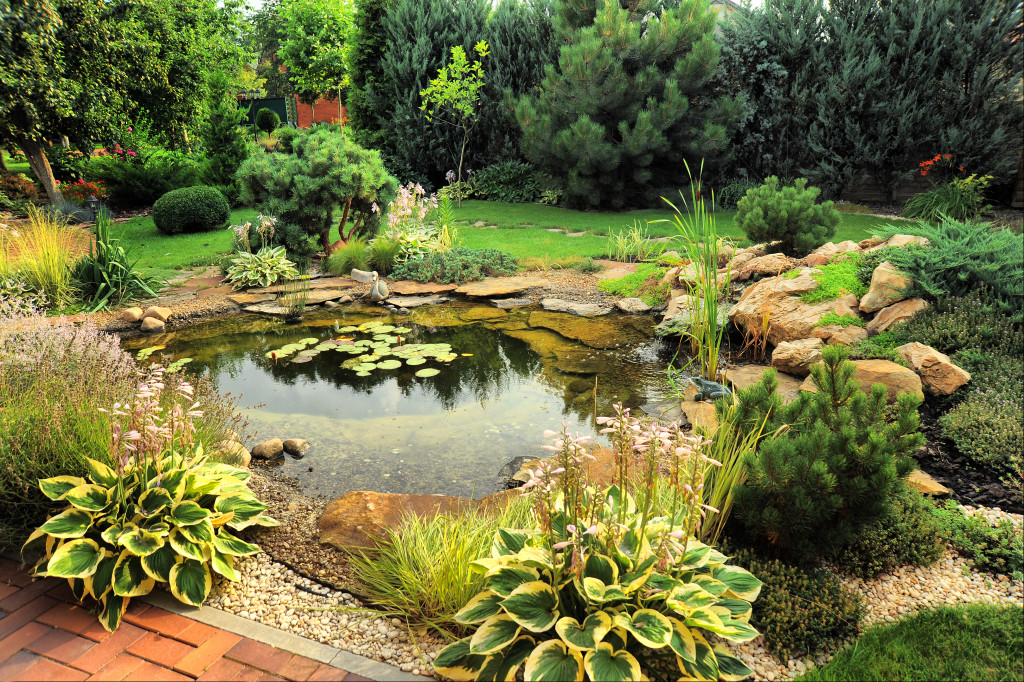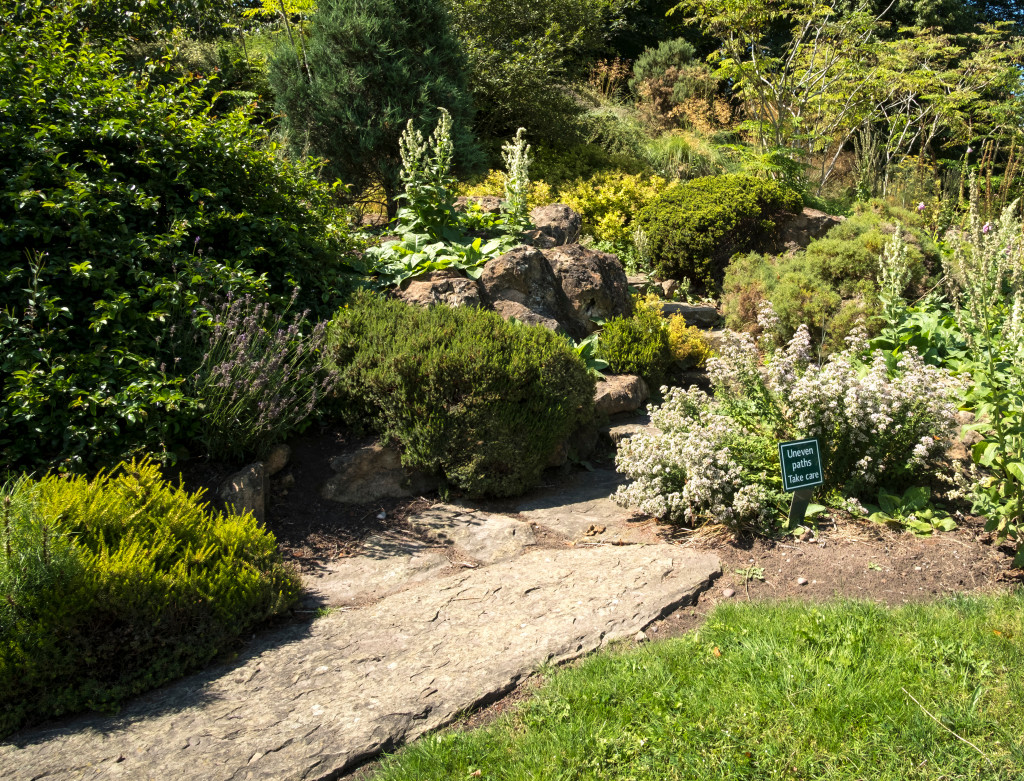• Planting terraces for hillside landscaping can be made from durable materials like pressure-treated timber and composite decking.
• Structural plantings, drainage channels, and increasing the height are essential to properly retain water in the terrace.
• Retaining walls are a great way to create level ground space while choosing durable materials like concrete, wood, or stone.
• Building ponds and water features can turn a slope into a beautiful oasis with the right plants and proper circulation.
Slopes in a backyard can present challenges and opportunities for homeowners looking to create a functional outdoor space. Depending on the grade of the slope, a variety of features can be added that make not only use of the area but also improve your home’s curb appeal. Here are some ideas for transforming slopes in your backyard into something useful.
Planting Terraces for Hillside Landscaping
One way to transform a sloped area is to create planting terraces. A terrace is essentially an artificial platform created from soil and plants. The terrace helps retain water while providing an aesthetically pleasing landscape design. They can be made from any material—like rocks, bricks, or even railroad ties—but are often constructed with wood due to their durability and resistance to rot. Here are things to keep in mind:
Pick Durable Materials
Choose terrace materials that can withstand the elements and won’t rot over time. Pressure-treated timber is an excellent choice as it is long-lasting, cost-effective, and can help retain moisture. You can also look into composite decking materials such as vinyl or plastic.
Create Structural Plantings
Structural plantings are a great way to fill terraces and provide visual interest. Choose low-maintenance plants that can tolerate being planted nearby and will require little maintenance over the years. Consider drought-tolerant species for sunny slopes and plants with deep roots to help retain soil.
Create Drainage Channels
To prevent water from pooling, create drainage channels in the terrace to disperse the runoff away from your home. This will also help prevent erosion and soil loss due to stormwater run-off. Install gutters or downspouts at the top of the slope to direct water away from your property.
Terrace Should Increase in Height
When constructing terraces, it’s important to remember that they should increase in height as they move up the slope; this will help ensure proper drainage and prevent erosion. In addition, you should consider covering the sides of the terrace with a layer of mulch or gravel as extra protection against runoff and soil erosion.

Retaining Walls for Leveled Ground
Retaining walls is another great way to use slopes in your backyard by creating level ground space where none previously existed. Retaining walls can be made of concrete, wood, or stone and are built to hold back soil behind them. This allows you to create an area that is easier to maintain. When building a retaining wall, make sure to remember the following:
Choose Durable Materials
The best materials for retaining walls can withstand pressure over time. Concrete, stone, and brick are all excellent choices. These materials have been proven to withstand pressure and will last many years since they don’t rot or erode.
Keep it Level
When installing a retaining wall, ensure the top is level with the top of the slope. This will ensure proper drainage and prevent runoff from pooling around your home. In addition, make sure to slant the sides of the wall away from your property to help reduce water pressure on the wall.
Choose the Appropriate Height and Width
The height of the wall should be dependent on the grade of the slope. Be sure to check with local building regulations, as some maximum heights may be restricted by law. The wall width should also be considered based on soil type, moisture levels, and the overall size of your slope.
Building Ponds and Water Features

Another great way to transform slopes in your backyard is by adding ponds or water features such as streams or fountains. Ponds are particularly beneficial because they provide sound insulation from outside noise while also creating a relaxing atmosphere; plus, they look amazing when done right! When constructing ponds, it’s important to remember the specifics:
- Properly line your pond: To prevent water from leaking out, line your pond with a waterproofing material such as rubber or plastic. This will help keep the water in and protect it from contamination.
- Install a pump for circulation: To ensure that the water is healthy, install a pump to circulate the water throughout the pond. This will help prevent stagnation and the growth of algae.
- Choose the right plants: When adding plants around the pond, choose ones suited for a wet environment, such as cattails or water lilies. These plants will help filter the water while providing a natural aesthetic.
A backyard slope offers endless opportunities for homeowners looking to add value and functionality to their outdoor space. With these ideas, you can easily use the slope in your backyard to create a stunning landscape design that will increase curb appeal and make your home stand out.



















